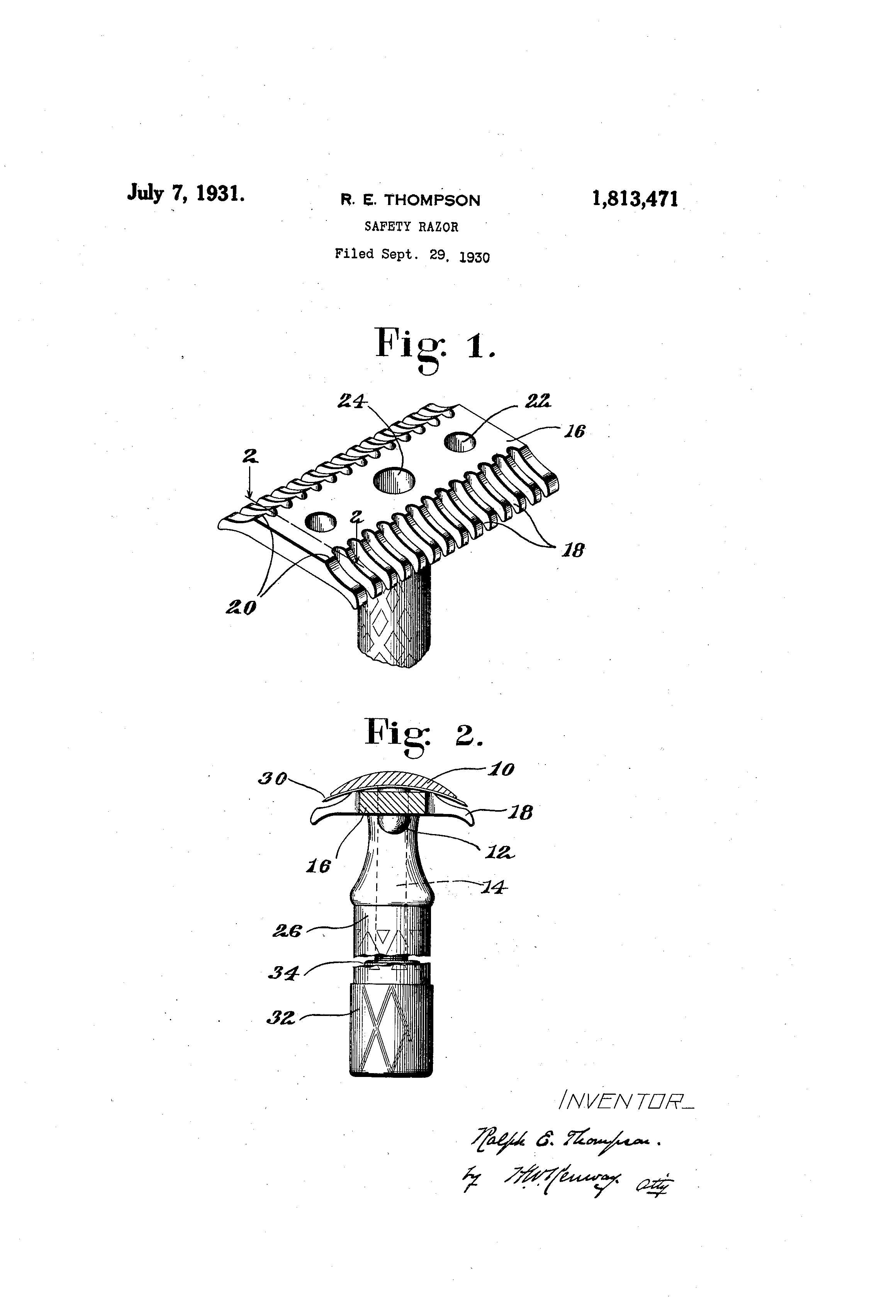I was trying out Milady Frankenstein this morning, attached to a Mühle R89 handle. After I finished the shave I noticed that the bottom of the plate looked different than my NEW De Luxe (Belmont/Criterion style). So I took out all my NEW Deluxe examples and compared the heads. It looks like the width of the solid portion of the guard plate changed sometime between 1930 and 1935. The same variations appear in my ca. 1930 Tuckaway-style examples, and in my ca. 1935 red-black Deluxe. This photo might help:

Is there an accepted term for the middle part of the guard plate? On the pre-patent NEW Deluxe, ca. 1930, it appears to be about 17-mm. On the later example with patent numbers, ca. 1935, it appears to be narrower at 15-mm. If you turn the plate over, the tops are indistinguishable at 17-mm. This means that the cut-out between the teeth is also different: squared-off ca. 1930 and sloped ca. 1935. The general effect is to make the teeth look longer on the ca. 1935 plates, even though every other dimension seems to be identical.
While I was at it, I weighted the heads. Both of my ca. 1930 Tuckaway-style examples came in at exactly 34.7-g. Meanwhile the head from the ca. 1935 red-black set was 35.6-g and the newest ca. 1935 head (Milady Frankenstein) was 35.8-g.
These differences may affect the shave, too. This morning I found Milady Frankenstein a bit more aggressive than I was expecting. Or possibly this razor wants to renegotiate its nickname....

Is there an accepted term for the middle part of the guard plate? On the pre-patent NEW Deluxe, ca. 1930, it appears to be about 17-mm. On the later example with patent numbers, ca. 1935, it appears to be narrower at 15-mm. If you turn the plate over, the tops are indistinguishable at 17-mm. This means that the cut-out between the teeth is also different: squared-off ca. 1930 and sloped ca. 1935. The general effect is to make the teeth look longer on the ca. 1935 plates, even though every other dimension seems to be identical.
While I was at it, I weighted the heads. Both of my ca. 1930 Tuckaway-style examples came in at exactly 34.7-g. Meanwhile the head from the ca. 1935 red-black set was 35.6-g and the newest ca. 1935 head (Milady Frankenstein) was 35.8-g.
These differences may affect the shave, too. This morning I found Milady Frankenstein a bit more aggressive than I was expecting. Or possibly this razor wants to renegotiate its nickname....
Last edited by a moderator:


